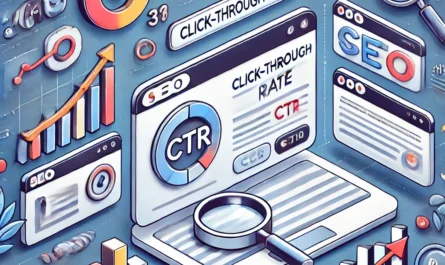In today’s fast-paced world, businesses need to constantly innovate to stay ahead of the competition. For us, the challenge was clear: we needed to boost our sales and fast. The sales plateau we were experiencing was frustrating, and we knew something had to change. That’s when we turned to digital marketing, and in just six months, it transformed our business entirely. From refining our SEO strategy to engaging more actively on social media, digital marketing helped us triple our sales and propelled us toward sustainable growth.
Understanding the Power of Digital Marketing
At the onset, we knew we needed to diversify our marketing approach, but we weren’t entirely sure where to start. Digital marketing offered a vast range of opportunities, from paid advertising and social media marketing to email campaigns and SEO. The flexibility and broad reach of digital marketing made it an ideal solution. It allowed us to engage with our audience directly, build stronger relationships, and expand our reach far beyond traditional methods. This opened up new channels for growth we hadn’t even considered.
Assessing Our Initial Marketing Strategy
Before diving into digital marketing, we took a hard look at our current strategy. While we were generating traffic, our conversion rates were stagnating. Upon further analysis, it became clear that we weren’t capitalizing on search engine optimization (SEO) or engaging effectively on social media. Our email marketing was sporadic, and we didn’t have a clear content strategy to nurture leads. These weak points were keeping us from achieving the growth we knew was possible.
Redefining Our Goals with Digital Marketing
One of the key changes we made was setting new, specific goals using the SMART framework—specific, measurable, attainable, relevant, and time-bound. Our objective wasn’t just to increase sales but to triple them in six months. This required a laser-focused approach, which meant dedicating resources to the digital marketing channels that would yield the highest return on investment. With our goals clearly defined, we were ready to execute our strategy.
The Role of SEO in Our Sales Surge
Search engine optimization was crucial to driving organic traffic. By optimizing our website for relevant keywords, creating quality backlinks, and regularly updating our blog with fresh content, we saw a dramatic increase in search engine rankings. As a result, our organic traffic grew, bringing more potential customers to our site without having to rely solely on paid advertising. This not only boosted our visibility but also led to a noticeable increase in conversions.
Content Marketing: A Game Changer
One of the biggest lessons we learned was the power of content marketing. By developing a content strategy focused on addressing our audience’s pain points, we were able to build trust and authority within our niche. Through blog posts, whitepapers, and case studies, we provided valuable information that not only attracted visitors but also encouraged them to become customers. Our content wasn’t just promotional; it was educational, which helped us establish long-lasting relationships with our audience.
Paid Advertising for Immediate Results
While content marketing and SEO built long-term growth, paid advertising gave us immediate results. We invested in pay-per-click (PPC) campaigns across Google and social media platforms. By carefully targeting our ads based on user behavior, demographics, and interests, we were able to reach a highly specific audience, maximizing our ad spend. We constantly monitored and optimized these campaigns to ensure they delivered the highest return on investment.
Social Media Marketing’s Contribution
Social media played an integral role in our digital marketing success. Platforms like Instagram, Facebook, and LinkedIn allowed us to engage with our audience on a more personal level. By creating a mix of promotional and value-driven content, we were able to build a community around our brand. Consistent interaction with our followers, coupled with targeted ads, turned social media into a powerful sales channel. The direct feedback from customers also helped us refine our strategy in real time.
Email Marketing: Building Relationships That Convert
Email marketing proved to be one of the most cost-effective ways to drive sales. By segmenting our email list based on customer behavior and preferences, we sent personalized campaigns that resonated with each group. These campaigns included special promotions, product updates, and personalized recommendations. As a result, our open rates increased, and more importantly, so did our conversion rates. We found that building a relationship with our customers through email nurtured loyalty, leading to repeat business.
Leveraging Analytics to Fine-Tune Strategy
Digital marketing comes with the advantage of data. Every campaign we launched was backed by analytics, which allowed us to measure performance in real time. From tracking website traffic and bounce rates to monitoring the effectiveness of individual campaigns, we used this data to make informed decisions. If a campaign underperformed, we could tweak it instantly, ensuring no resources were wasted. This data-driven approach was crucial to our success.
The Importance of A/B Testing
A/B testing became one of our secret weapons. We constantly tested different variations of ads, emails, and landing pages to determine which performed best. Whether it was changing the color of a call-to-action button or altering the copy in an email subject line, these tests provided valuable insights into what resonated with our audience. Each tweak brought us closer to maximizing conversions and driving more sales.
Conversion Rate Optimization (CRO) Impact
It wasn’t enough to just bring traffic to our website; we had to ensure that visitors were converting. Conversion rate optimization (CRO) focused on making small changes to our website to improve user experience and encourage more sales. From streamlining the checkout process to improving product pages, every modification we made was designed to make it easier for visitors to become customers.
Creating a Seamless User Experience
User experience (UX) was central to our strategy. We knew that if our website was difficult to navigate, we would lose potential sales. By optimizing for mobile devices, speeding up load times, and simplifying the navigation, we provided a seamless experience for users. This not only improved our conversion rates but also helped us retain customers for the long term.
The Role of Video Marketing in Sales Growth
Video marketing became a powerful tool in our arsenal. Whether it was product demos, how-to videos, or customer testimonials, video content allowed us to engage with our audience in a more dynamic way. Our customers could see our products in action and hear from real users, which built trust and increased conversion rates. It was an effective way to showcase our products’ value in a visual and relatable format.
Using Influencer Marketing to Reach a New Audience
We collaborated with micro-influencers to expand our reach. Influencers who aligned with our brand helped us tap into new audiences that we hadn’t previously reached. Their recommendations carried weight with their followers, which boosted our credibility and led to an influx of new customers. This partnership helped us establish trust and authority within a niche market.
Affiliate Marketing and Its Ripple Effect
Affiliate marketing allowed us to form strategic partnerships with industry influencers and bloggers who promoted our products in exchange for a commission. This expanded our reach to their audiences, generating more traffic and sales. It was a mutually beneficial arrangement that scaled our marketing efforts without requiring significant upfront costs.
Automation Tools: Scaling Up Without Extra Work
One of the keys to our growth was automation. From automating our email marketing workflows to using chatbots for customer service, we saved time and scaled up without needing to hire more staff. Automation tools allowed us to focus on high-level strategy while the day-to-day operations ran smoothly.
Retargeting: Turning Abandoned Carts into Sales
Retargeting ads became one of our most successful tactics. These ads targeted visitors who had previously engaged with our site but hadn’t completed a purchase. By reminding them of the products they left behind, we were able to recover a significant portion of abandoned carts, converting lost sales into revenue.
The Role of Customer Reviews and Testimonials
Customer reviews and testimonials became a cornerstone of our marketing strategy. Social proof was a powerful motivator for potential buyers. By showcasing real customer experiences, we built trust and credibility. Positive reviews not only improved our brand image but also helped us attract new customers who were influenced by others’ experiences.
Overcoming Challenges Along the Way
While digital marketing offered immense opportunities, it wasn’t without its challenges. We faced obstacles like changing algorithms, ad fatigue, and occasional dips in engagement. However, by staying flexible and continuously adapting our strategy, we overcame these hurdles and kept moving toward our goal.
The Importance of Team Collaboration
One of the most important lessons we learned was the value of team collaboration. Aligning our marketing, sales, and customer service teams ensured that everyone was working toward the same objectives. Regular communication and collaboration allowed us to implement changes quickly and efficiently, which maximized the impact of our digital marketing efforts.
Adapting to Algorithm Changes
Search engines and social media platforms constantly update their algorithms, which can impact visibility. By staying ahead of these changes and adapting our strategy accordingly, we maintained our rankings and continued to grow. Being proactive rather than reactive was key to our success.
Tracking and Measuring ROI
One of the biggest benefits of digital marketing is the ability to track return on investment (ROI) in real time. We closely monitored our campaigns to ensure every dollar spent led to tangible results. This allowed us to reallocate our budget to the most successful strategies, ensuring that we got the most value from our investment.
Scaling Up After Initial Success
Once we achieved our initial goal of tripling sales, we didn’t stop there. We used the momentum we had gained to continue scaling. By reinvesting in the strategies that worked, such as paid advertising, content marketing, and SEO, we set ourselves up for even more growth in the future.
You Can Also Read: 5 Social Media Platforms Every Marketer Should Use
Key Takeaways from Our Journey
The journey to tripling our sales in six months taught us several valuable lessons. Digital marketing requires a comprehensive strategy, consistent effort, and a willingness to adapt. By leveraging multiple channels, from SEO to email marketing, we were able to build a solid foundation for sustained growth. Collaboration, data analysis, and staying ahead of trends were key factors in our success.
In just six months, digital marketing helped us triple our sales and transform our business. By embracing a multifaceted strategy that included SEO, content marketing, paid advertising, and social media, we were able to reach a broader audience, increase conversions, and boost our revenue. The lessons we learned during this process will continue to guide us as we scale up and strive for even greater success.



